The best smart speaker for you depends on a number of different things. But, for the vast majority of us, the competition is between only two brands. Should you buy a speaker from the Amazon Echo range? Or one of the smart Google Home / Nest speakers?
You might think that choosing between only two options is easy, but it’s far from it.
As you'd expect from two of the biggest brands in tech (or should we say, two of the biggest brands in any industry), you're not going to be disappointed whether you opt for an Amazon Echo or one of the Google Home devices. The good news is that, in a way, you can’t go wrong with your decision.
Every device in both of these smart home ranges, especially the flagship Amazon Echo and Google Home / Nest speakers, make great smart home devices.
What's more, the smart AI voice assistants you’ll find inside these devices called Amazon Alexa and Google Assistant are both fast becoming more useful and even smarter than ever.
That means both the Amazon and Google smart devices, thanks to their assistants, get you answers to questions, allow you to set timers and alarms, can be used to control your smart home devices, as well as much, much more – all with spoken voice commands.
When you put the two side-by-side, the Amazon Echo and Google Home devices have a lot in common. But they are also some differences to look out for, which we’ll cover in more depth below.
We know that the smart speaker is at the center of most smart homes: but is the Amazon Echo or the Google Home right for you? Once you’ve decide on the brand, should you go with the flagship smart speakers or would a smaller Google Home Mini or Amazon Echo Dot be better for you? And what about the newer Google Nest Mini and Amazon Echo Dot with Clock? Here's everything you need to know.
- After a smart speaker with a screen? See our Google Home Hub vs Amazon Echo Show comparison
FAQ
Amazon Echo vs Google Home FAQ: quick questions answered
Is Alexa better than Google? That's a tough question because they're both similar and we find it difficult to pick between the two. Which one you decide to go with may well depend on which you personally prefer and what kind of products you're using than which is technically 'better'.
Having said that, Alexa tends to be better when it comes to support for a wider range of devices, as well as better smart home integration. So if you have a lot of smart home devices already, Alexa might be your best bet.
However, lots of users who have put the two devices head-to-head believe Google Assistant could be the smarter of the two. And, with Google's A.I. learning experience, and wider variety of voices than Alexa, it has the biggest potential for the future.
Is there a monthly fee for Echo? No. You don't have to pay anything extra after you've purchased an Echo product. Although you do get some perks if you're an Amazon Prime member, like access to Amazon Music, and free next day delivery on some Amazon items.
Can Alexa drop in on Google Home? No. Alexa's Drop In feature only works with other Alexa-enabled devices.
Can Alexa make phone calls? Yes – if, if you have an Amazon Echo speaker or smart display, you can now make and receive calls using Alexa – totally hands-free. Check out our guide on how to make phone calls with Alexa for more. Meanwhile, Google's smart displays are ideal for making Google Duo video calls.
What's the difference between Echo and Google Home? As we've said above – very little right now. They're both very capable smart assistants that respond to voice commands and work well with many smart home devices. Read our full head-to-head below to get a better idea of the specifics.
Which is the best Alexa speaker to buy? It really depends on what your needs are; if you want something with a screen try the Amazon Echo Show. Looking to save money? Try the budget-friendly Echo Dot. After pure audio fidelity? Go for the Amazon Echo Studio. While this guide will focus on Echo speakers, Alexa is built-in to a number of third party speakers these days, including the Sonos One.
What works with Google Home? With Google Assistant, your Google Home can control your Philips Hue lightbulbs, Honeywell thermostat, Nest security camera, and smart TV (as long as it's compatible). Check out our roundup of things Google Assistant can do for more info, or head to the Google Assistant partners page for all the brands Google Home can work with.
- Want to know more about Google Assistant? Here's how to use Google Assistant to control your smart home
Amazon Echo speakers
Amazon Echo: the different models compared
Let’s kick off with the smart speaker that started it all. Back in 2014, Amazon launched the Echo. Since then, there's been a second generation model: standing 148 mm tall and sounding pretty decent for its price, with Bluetooth and WiFi connections supported, it's an impressive bit of kit. It also features that signature blue ring around the top telling you when it's heard the "Alexa" wake word.
But that's now been upgraded once again to give us the Amazon Echo (2019), which is modelled on the existing Echo Plus in terms of form and function – making the Echo Plus somewhat obsolete.
With beefed-up sound at the price of a standard Echo model it's well worth looking at the third-gen Echo if you're thinking of buying a new smart speaker.
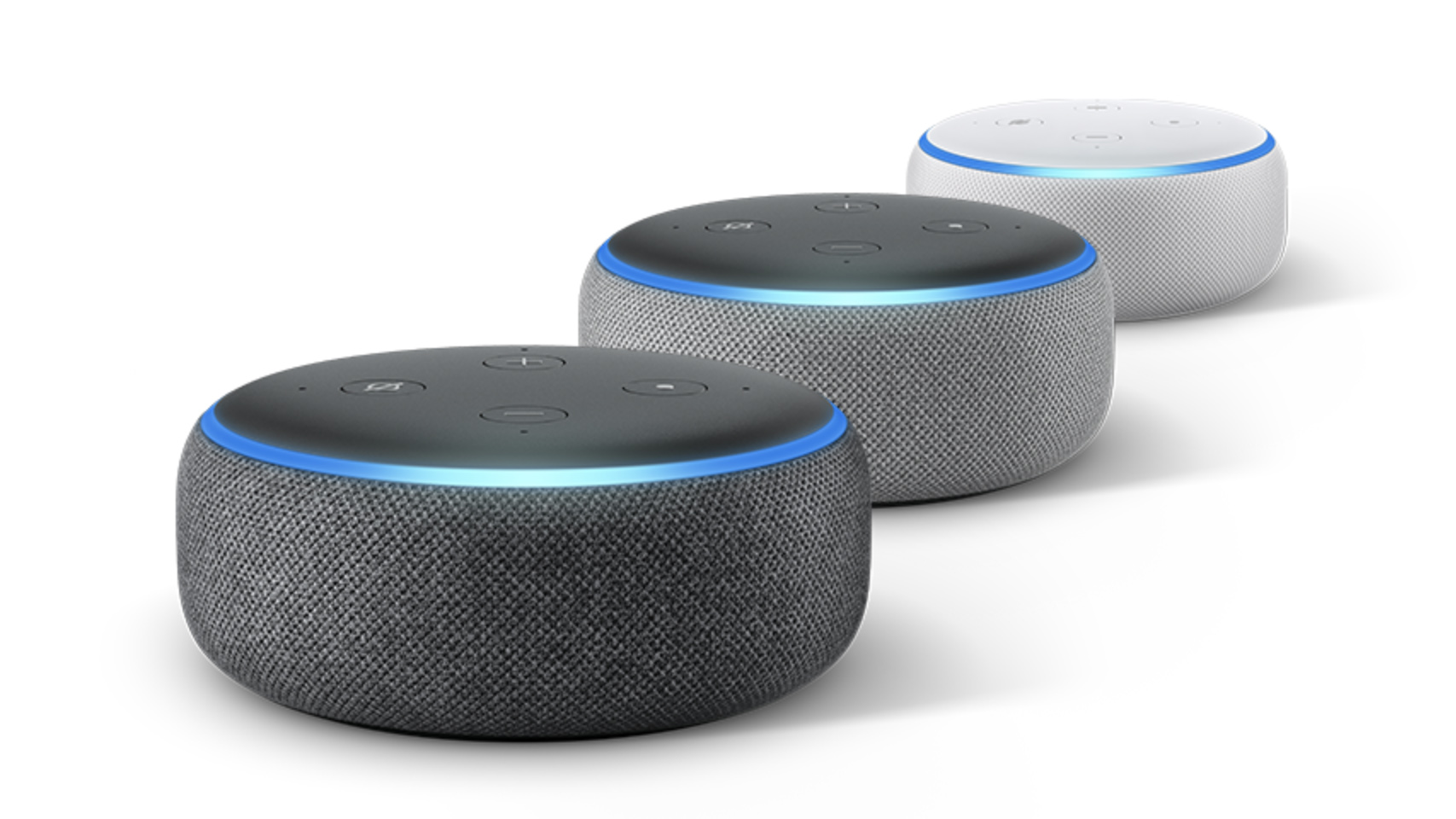
Perhaps the most popular Echo of all though, and one of our favorite smart home devices full stop, is the Echo Dot – that's likely because it’s the cheapest of the entire bunch and is about the same size as a hockey puck, making it a no-brainer for those who want to try smart home tech for the first time.
Now in its third generation, the Echo Dot doesn't have the best audio quality in the range, so it's best suited for rooms where music playback won’t be its primary function. That said, you can pair it up with a Bluetooth speaker or another audio device using an AUX jack connection, making it a cost-effective upgrade you can make to any aging Hi-Fi system.
There's now a new version of this compact speaker on the scene – the Amazon Echo Dot with Clock takes the original, and well, adds an LED timepiece. For an extra $10, you the added functionality of an alarm clock or timer, as well as all the charms of the original Echo Dot.
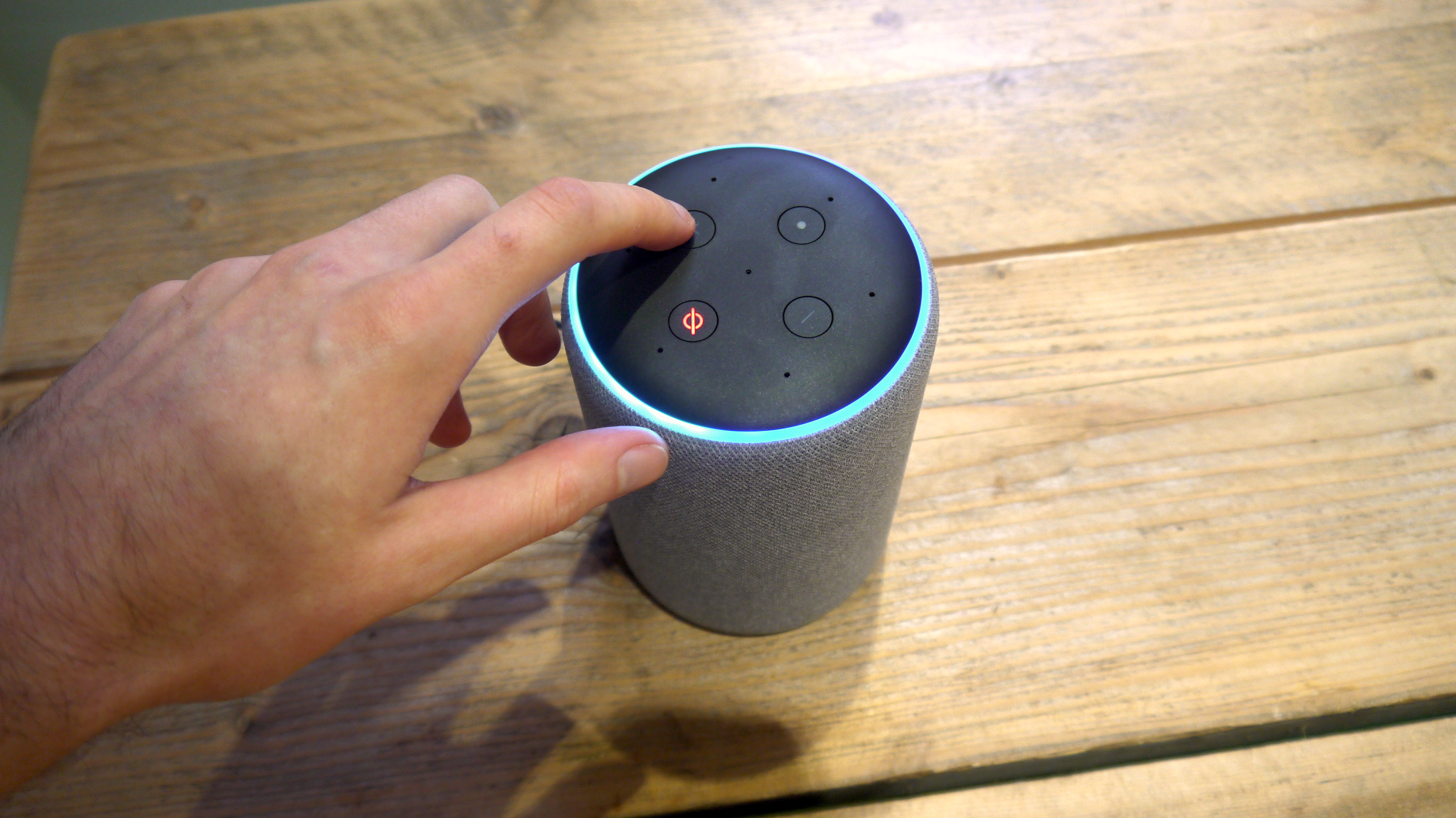
Then there's the pricier, 2nd-gen Echo Plus: slightly taller than the vanilla Amazon Echo, with improved sound and integrated smart home hub features – meaning it can be more tightly integrated with the various other bits of smart home kit you've got installed.
With the launch of the new beefed-up Amazon Echo (2019), this model has become slightly obsolete; even more so since the Amazon Echo Studio has provided an audiophile solution to the Echo lineup.
The Echo Studio comes with Dolby Atmos immersive sound and support for 360-degree sound, marking Amazon's renewed focus on audio fidelity.
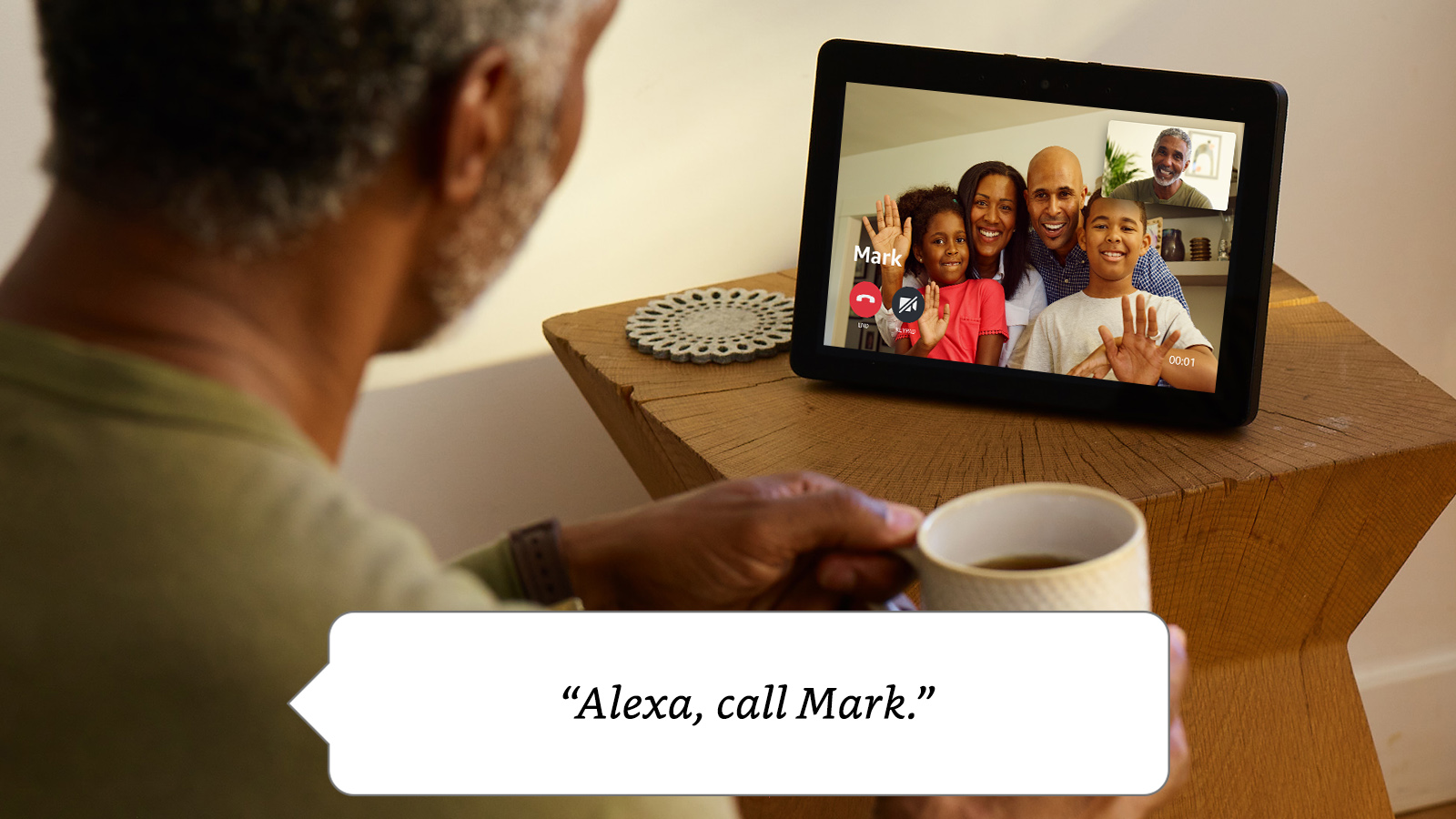
And what about the newly upgraded Echo Show? It's essentially an Amazon Fire tablet with an Alexa-enabled speaker built in, so you can get Amazon Prime Video or the weather forecast up on screen as well as having responses read out to you. It's a perfect gadget for the kitchen (think recipes and video watching).
Amazon has also recently launched a mini version of the Echo Show, called the Echo Show 5. With a 5.5-inch screen, it'd designed to sit on your bedside table whilst still being big enough to watch videos on.
The other smart speaker in the Amazon Echo line to come with a screen is the Echo Spot, which you can think of as an upgraded Echo Dot – this Echo is perfect for a bedside table, with the ability to make video calls through its circular screen.
It's also worth mentioning an upcoming new addition to the Amazon Echo range: its first portable Echo speaker, the Echo Input Portable Smart Speaker Edition.
The new battery-powered Echo speaker was designed exclusively for India, but will be coming to other markets in the future, according to Tech Crunch.
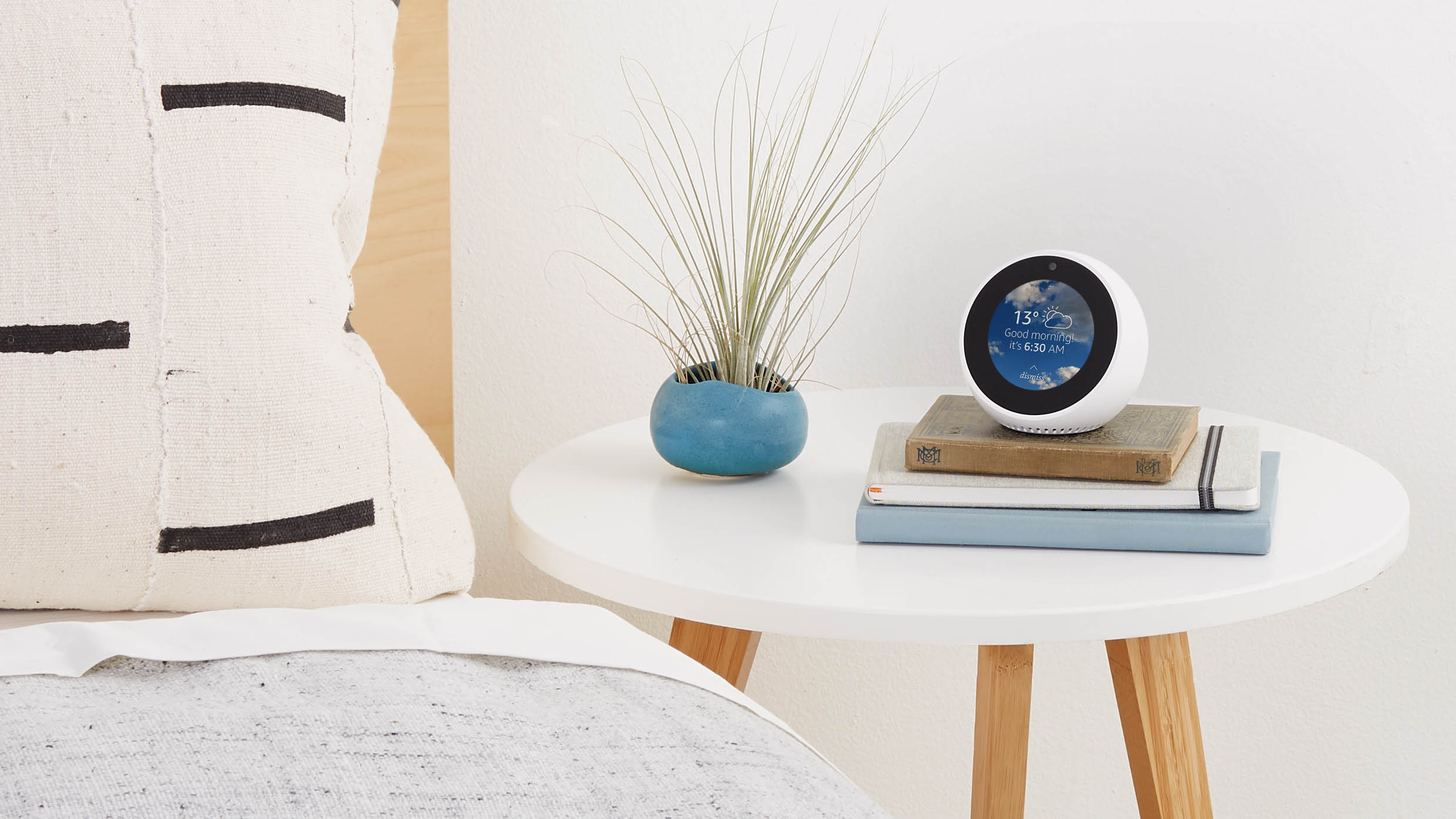
All of these devices have access to the majority of Alexa's skills (think voice-controlled apps) available, though only the Plus can truly double up as a bridge for your smart home devices – while all Echo products can talk to things like smart bulbs and thermostats, it’s only the Plus that lets you do away with individual hubs for each additional gadget family.
All the Amazon Echo smart speakers have a certain sense of style about them, as you can see from the pictures above – especially after the most recent 2018 refresh, with all that fabric and all those curves. For more details on each Amazon Echo device, check out the full reviews below:
- Amazon Echo (2019) review
- Amazon Echo (2nd-gen) review
- Amazon Echo Plus review
- Amazon Echo Dot review
- Amazon Echo Dot with Clock review
- Amazon Echo Spot review
- Amazon Echo Show review
- Amazon Echo Show 5 review
- Amazon Echo Studio review
Google Home speakers
Google Home: each model compared
Google's smart speaker range is a little smaller than Amazon's, with six Google Home speakers to choose from, including the recently unveiled Google Nest Mini, the latest model in Google's partnership with smart home company, Nest.
As a result, newer Google Assistant speakers come with the nest branding; so far we have the Google Nest Hub Max, and Google Nest Mini.
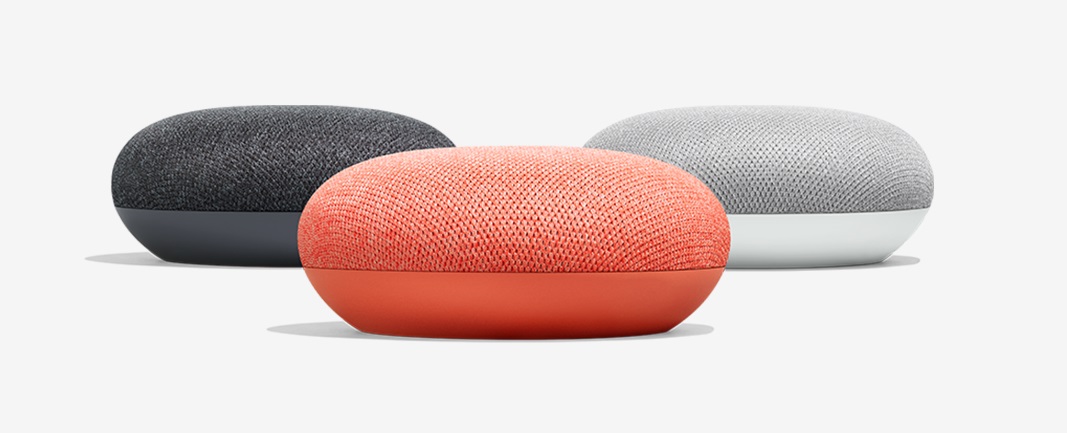
The smallest of the three is the Google Home Mini speaker. Like the Echo Dot, the speaker is puck shaped, if a little more pebble-like with softer edges, and has a top side covered in a fabric speaker mesh. You can pick up the Google Home Mini in a range of colors, with four flashing LED lights illustrating when it's listening to your commands and showing the volume level.
Recently Google launched a follow up to its smallest smart speaker; the Google Nest Mini comes with three speakers (that's one more than the original), and is made from recycled materials.
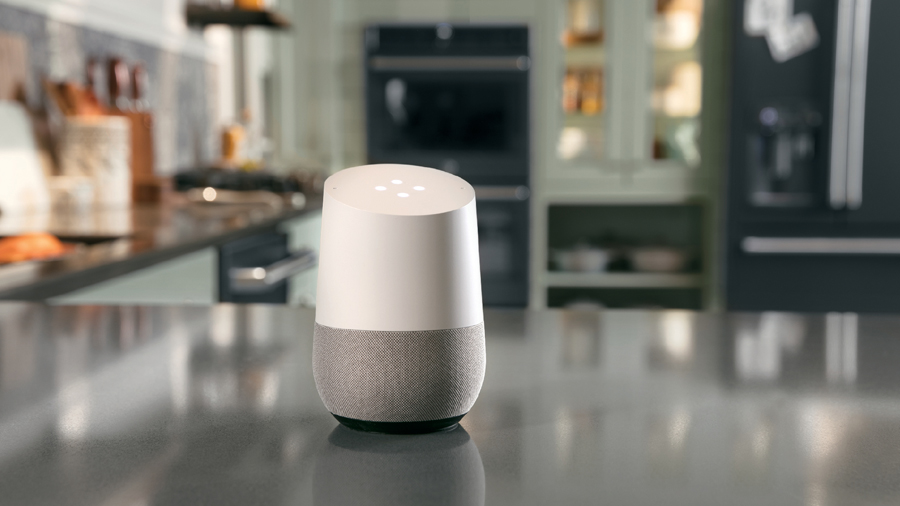
In the middle of the range taking on the Amazon Echo devices is the standard Google Home speaker, which looks considerably different to the Mini. It has the appearance of a small vase, with a two-tone color design (multiple shades are available here too) and a sloping top side that houses a touch control panel.
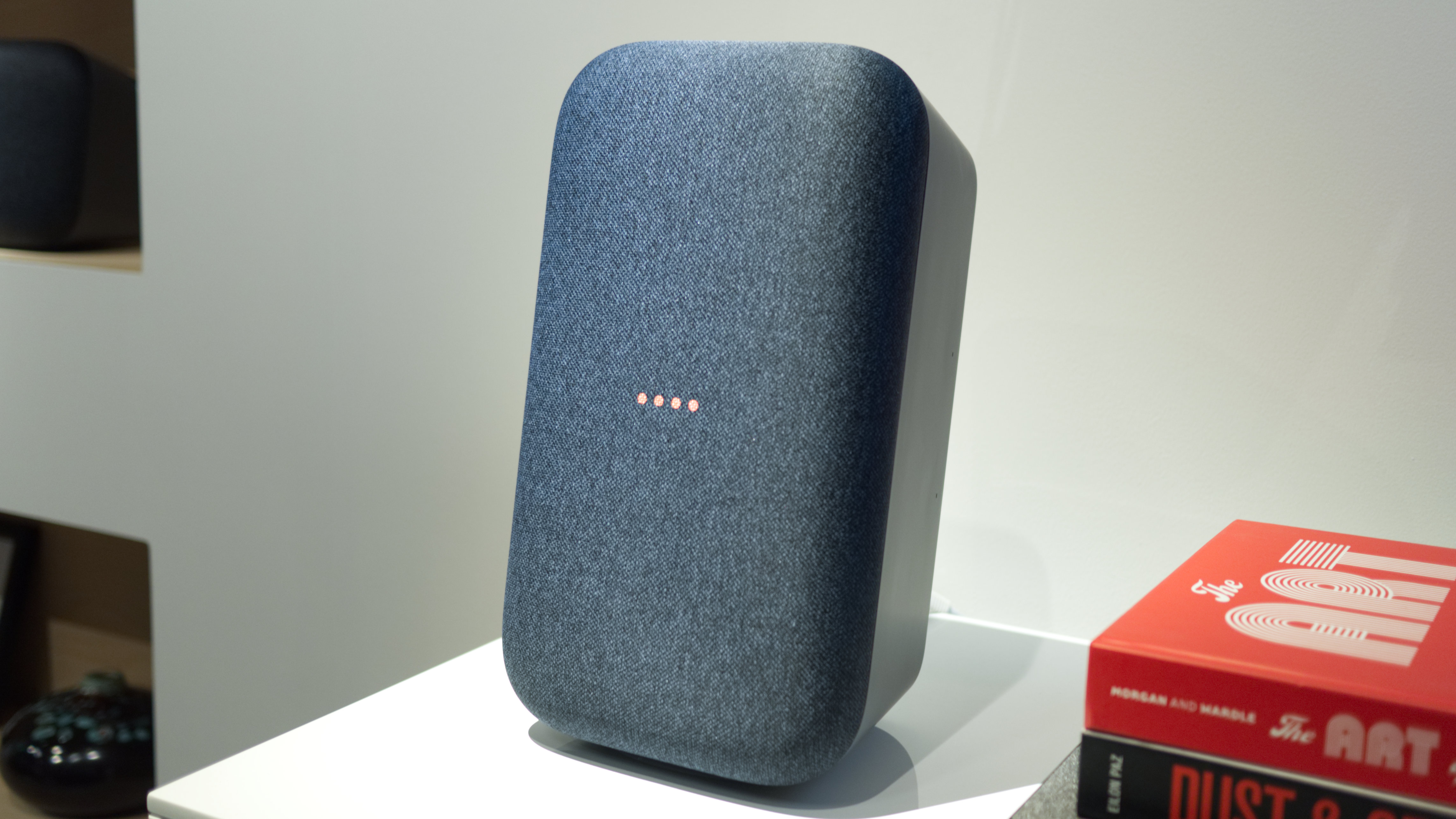
The Google Home Max, meanwhile, looks much more like a traditional loudspeaker, and is the largest of the bunch – it doesn't really have an equivalent Amazon Echo device either. It's boxy in design, closer aesthetically to the Google Home Mini (with the mesh speaker covering), and can stand in either a portrait or landscape orientation to suit the space you've got.
While the vanilla Google Home is an acquired taste in terms of design, both the Mini and Max are subtly attractive, and should fit into any surroundings without much concern.
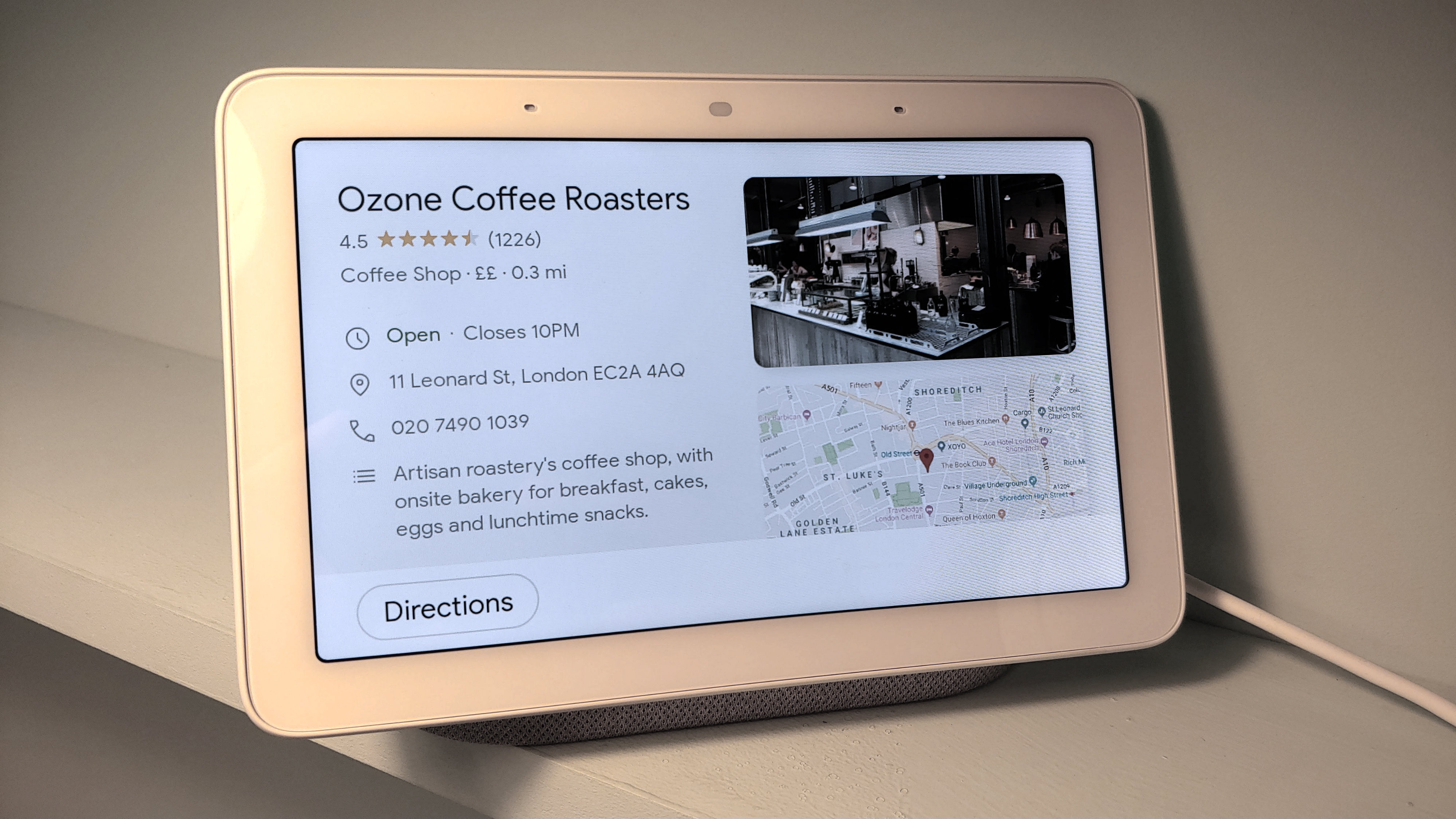
There's also the Google Home Hub, unveiled in October 2018, which takes on the Amazon Echo Show directly. It can show videos, the weather, recipes, music artwork and so much more, but it doesn't have a camera – so video calling is out of the question.
Most recently, Google released the Nest Hub Max, putting Google Assistant in a 10-inch smart display. It's the first product to come out under the converged brand name of Google and smart home security brand Nest.
Like a larger version of the Google Home Hub, the Nest Hub Max is big-screen smart display for your home, with a front-facing camera for video calls and the facility to check on your home remotely.
The Google Nest Hub Max was released in September 2019, around a year and a half on from the original Google Home Hub.
It costs $229 (£219, $349), similar to the original price of the 10-inch Lenovo Smart Display. These smart displays are ideal for making Google Duo video calls to friends and family members.
- Google Home review
- Google Home Max review
- Google Home Mini review
- Google Nest Mini review
- Google Home Hub review
- Google Nest Hub Max review
Keep in mind that, with both Alexa and Google Assistant, third-party speaker manufacturers are increasingly choosing to integrate the voice helpers into their own products.
So, if there's an audio manufacturer you're particularly fond of, it may be worth holding out to see if it has any plans to join either of the smart ecosystems – at this point, it's highly likely that most all audio devices in the near future will come equipped with some sort of microphone and voice control system.
Smart features
Amazon Echo vs Google Home: smart features
The smart features of the Google Home and Amazon Echo lines are broadly similar – speak to them, and you’ll be able to do anything from playing back music, having general knowledge questions answered, controlling smart home gear, and setting alarms and timers... and that's just scratching the surface of the Amazon Echo vs Google Home debate.
Both Google and Amazon are committed, long term, to improving their respective voice platforms, and each has done a good job so far of enticing third-party smart device manufacturers – from thermostat makers to smart lighting companies – to make their products compatible with each service. With a base level of commands available to each, with either a "hey Google" or "hey Alexa" wake command, control of the digital world is just a vibration of your vocal chords away.
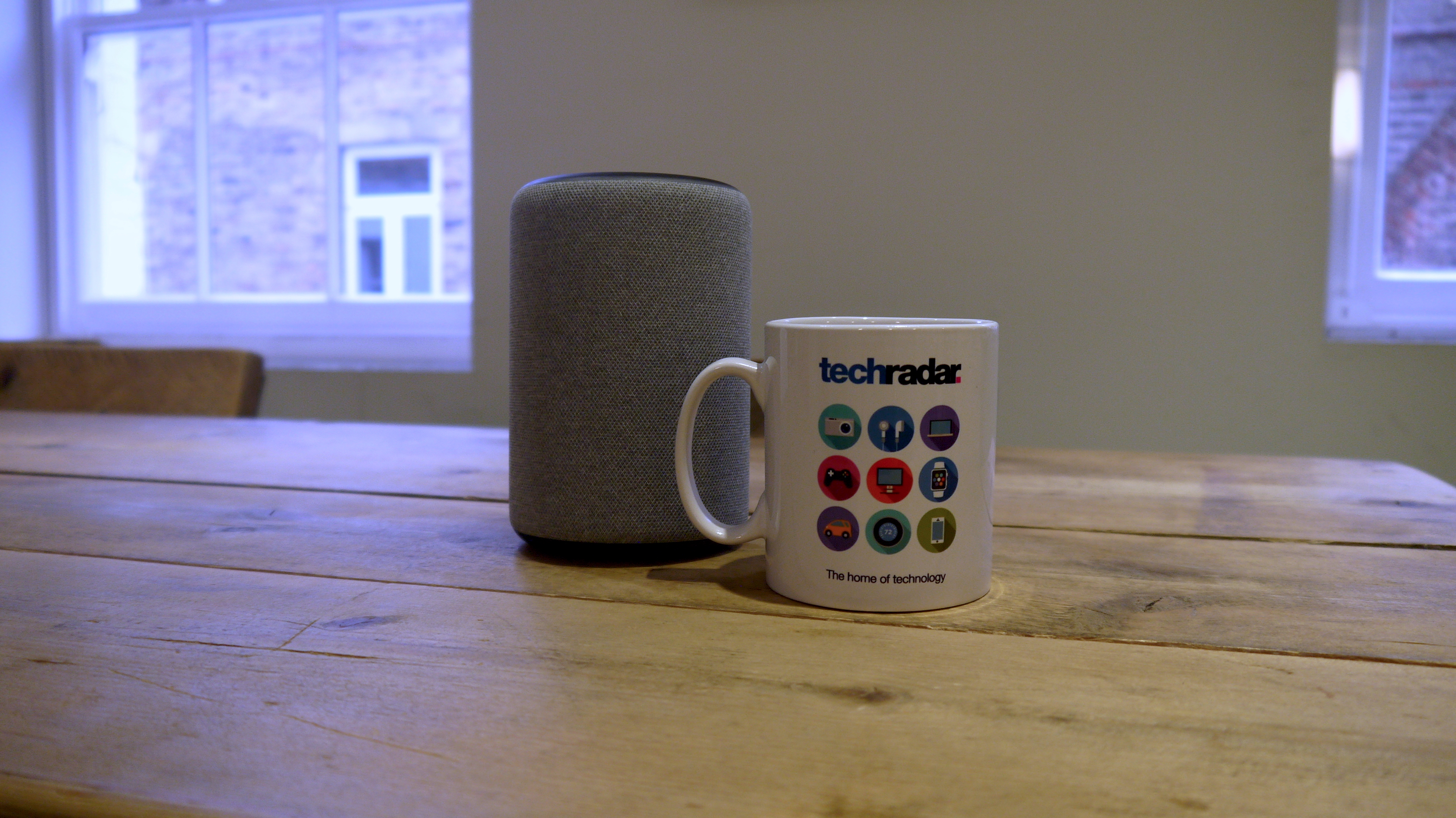
Amazon Echo and Google Home speakers do take a slightly different approach to the way their abilities are accessed.
Google Home's abilities are, by default, accessible to all – barring pairing up third-party smart home devices with your Google Home system, if you've made a request that the Google ecosystem can understand, it'l carry out the required response unprompted.
Alexa, on the other hand, relies on the installation of skills – individual, app-like sets of related voice commands focussing on certain topics or abilities. Handled and activated through the Alexa app on smartphones, these can range from getting information on local transport times, or to activating voice-controlled games.
There's no right or wrong approach really – Google's is simpler, but Alexa's encourages faster and broader development and support from third-parties.
Audio
Amazon Echo vs Google Home: audio
As you'd expect from such a wildly varying range of shapes and sizes, you get very different sound performance across both ecosystems, let alone when comparing Amazon Echo against Google Home in general. Here's a broad breakdown of how they sound in relation to each other.
If you can only afford the entry-level devices, and music remains a top priority for you, go for the Google Home Mini, which sounds a lot better than the Echo Dot. Unless you hook up a Dot to another speaker over Bluetooth or the 3.5mm jack, it's just too thin and harsh to fully enjoy.
The new Google Nest Mini is set to sound even better too, withy the inclusion of an extra speaker.
If you're looking for a small Echo speaker, your best best then is the Echo Spot, which despite its size, offers a richer sound. The screen, however, massively increases its expense, so bear that in mind – if you don't want a screen, the Echo Dot with Clock is an attractive option.
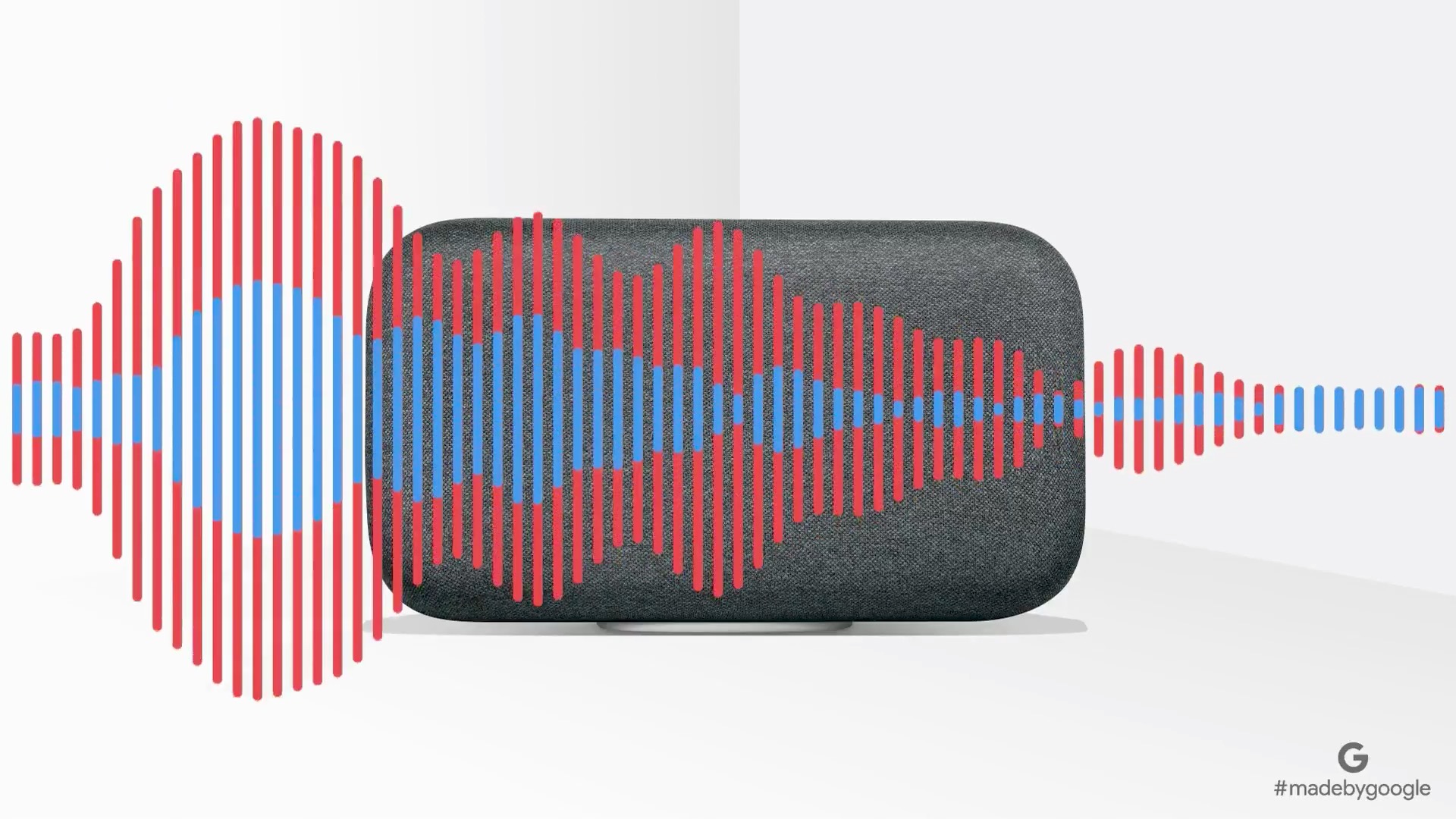
As you move up the size scale, the Google Home is too bass-heavy to be truly enjoyable. It also has worse clarity than the latest generation of the Amazon Echo speaker and the Echo Plus. So, if you're limited to around $100/£100, the new Amazon Echo (2019) may be the best choice from an audio perspective.
With a slight premium in price, and the inclusion of Dolby processing, the Echo Plus sound is more dynamic than the standard Echo, as you'd hope – the Echo Studio should improve on this further, and we'll be sure to update this article as soon as we've tested it thoroughly.
And, despite its looks, the Echo Show sounds better than the Echo Plus and Echo, though not so dramatically as to forgive it some of its other failings.
If you're going for pure sonic superiority between the Echo and Google Home ranges however, opt for the Google Home Max. Its bass is well tuned, its mids and highs well defined, and its top volume levels loud without verging into highly distorted territory.
Pricing and deals
Amazon Echo vs Google Home: price
There's such a range of prices across the two speaker platforms that, in fairness, there’s something for every wallet size when it comes to the question of Amazon Echo vs Google Home.
It's more about what you’re expecting to get from your smart speaker of choice: Amazon, offering the widest spread of options, hits both the most affordable and expensive price points between the two brands, with the Echo Dot at the lower end and the screen-packing Echo Show at the top. Google, on the other hand, sits somewhere in the middle.
You can compare the latest pricing between the ranges below.
Verdict
Amazon Echo vs Google Home: verdict
There's no easy answer to the question of whether you should go for Amazon Echo or Google Home as your smart speakers of choice. Both lines are very accomplished and, so long as you temper your expectations in line with the amount of money you're going to spend on buying into one of the lines, all sound good enough for their respective price points.
The choice really then comes down to the preference of ecosystem as opposed to the hardware. Are you heavily invested in Google's services? Then Google Home is probably for you, as the two areas are only going to become ever-more-closely linked. Google's natural language understanding is superior too, even if its voice implementation still needs some refinement.
However, in terms of sheer value for money and the already vast reach of its collaborations and abilities, Amazon's Alexa devices seem the more sensible bet at this stage. It’s a close run race, with Google's powerful search capabilities potentially seeing it through in the long run. But there’s something to be said for Amazon’s more focussed approach – from our experience so far, Alexa currently feels like the more reliable assistant. But that could change. Either way, place your bets – you're unlikely to come away disappointed whether you opt for an Amazon Echo or a Google Home smart speaker.
- Amazon Alexa Easter Eggs: fun tips and tricks for your Echo speaker
- Google Assistant Easter Eggs: funny commands to try on Google Home
from TechRadar - All the latest technology news https://ift.tt/2lHeENP
via IFTTT
0 التعليقات: